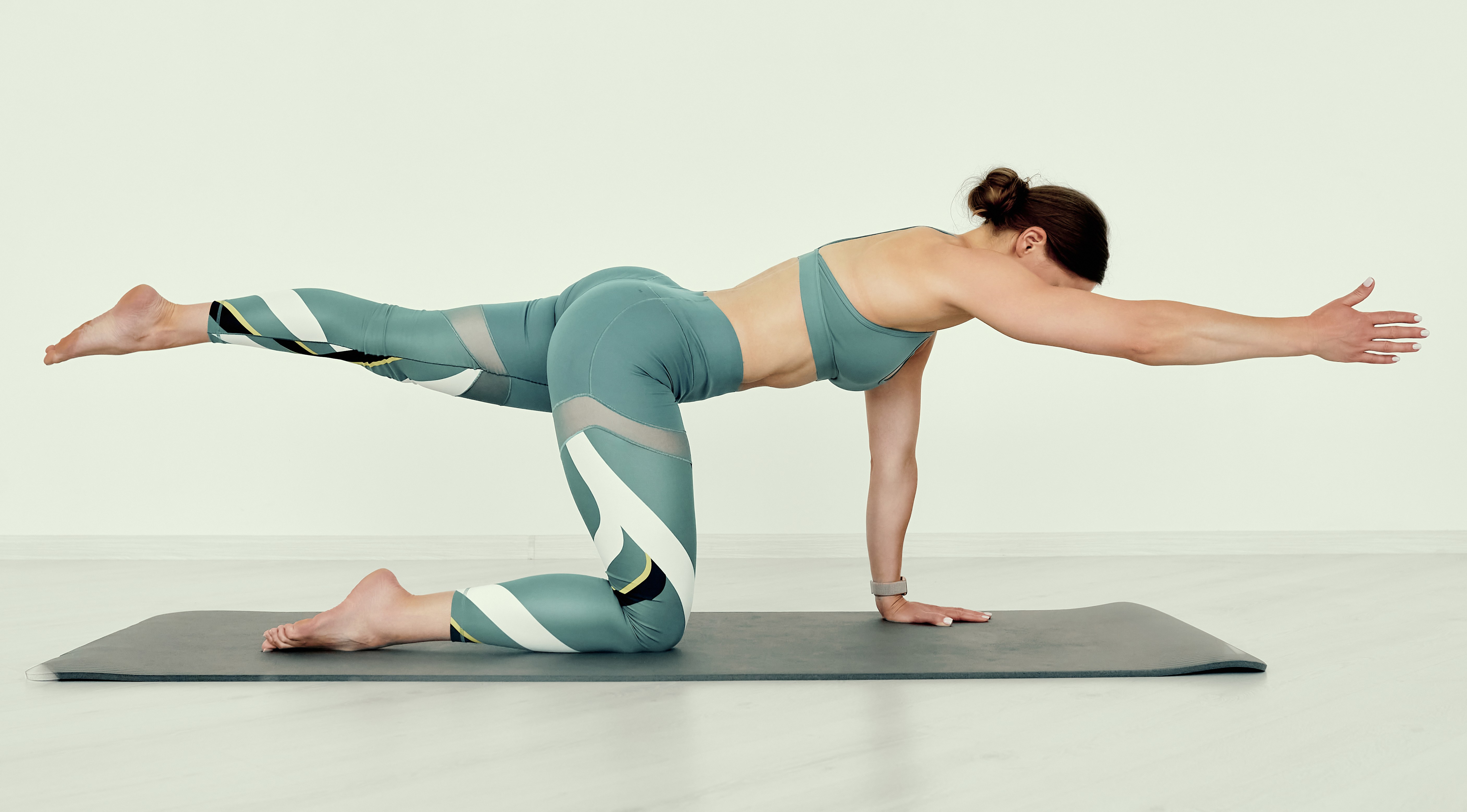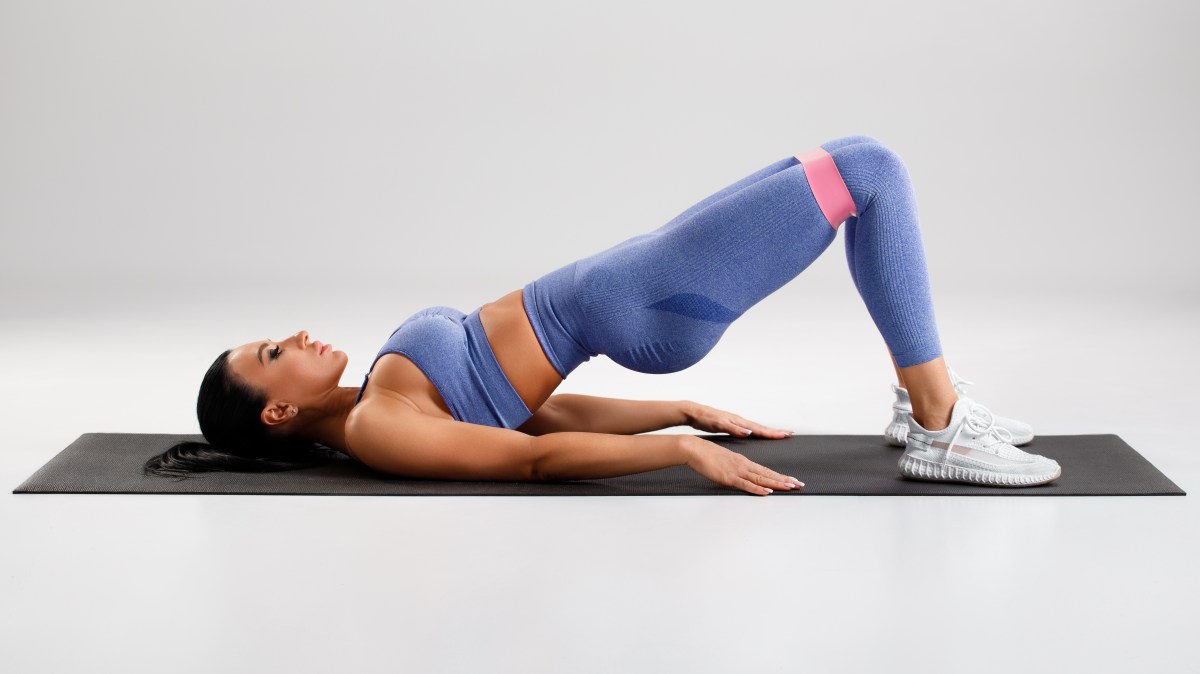Stiff hips, creaking joints and back pain are just some of the problems that plague midlifers from the age of 40 onwards. Yet many of these issues are preventable if we are diligent about doing simple exercises that ward off functional decline before it begins to have an impact on our lives.
“Our joints are surrounded by many muscles that help to keep them healthy,” says Professor Alister Hart, a consultant orthopaedic hip surgeon at the Royal National Orthopaedic Hospital. “Everyday movement and walking are important for functional health, but there are some exercises that we can do for added benefit.” Here are the moves leading experts recommend we add to our weekly routine once we reach 40.
Professor Tom Wainwright, deputy head of the Orthopaedic Research Institute at Bournemouth University and consultant physiotherapist for the Dorset NHS Foundation Trust
Maintaining the ability to squat is essential for healthy ageing. “Squatting is a functional movement pattern that requires lower limb strength, good joint range of motion, balance and proprioception,” Wainwright says. “The counterbalance squat ensures you prioritise the quadriceps, muscles in the front of the thighs that support the knees, and promotes controlled knee flexion, overall boosting the ability of our knees to tolerate loading in daily life.”
How to do them
Stand with feet shoulder-width apart and toes slightly turned out. Hold any weight, such as a dumbbell or kettlebell, away from your body with straightened arms at roughly chest height. Staying tall in your body and keeping your back straight, bend your knees and push your hips back to descend into as deep a squat as is comfortable. It is fine to allow the knees to travel over the toes, but don’t let your knees fall inwards or outwards as you squat. Push through the heels back to the start position. Repeat 8-10 times and progress up to 2 or 3 sets. “As you get stronger, you can try these squats with heels slightly elevated or on a down slope for a bigger challenge to the leg muscles,” Wainwright says.
• Read more expert advice on healthy living, fitness and wellbeing
Glute bridge for strong hips
Keeping your hip muscles strong will also benefit your back and knees
GETTY IMAGES
Professor Alister Hart, consultant orthopaedic hip surgeon at the Royal National Orthopaedic Hospital
“The hips are surrounded by muscles, the largest of which is the gluteus maximus, the main buttock muscle,” Hart says. “Along with the gluteus medius and gluteus minimus, these are the main hip muscles that move the leg out to the side and keeping them strong will help to keep the back, hips and knees healthy.”
The glute bridge exercise will develop these three glute muscles and also engage the hamstrings and some of the lower back muscles, all of which help to keep the hips strong.
How to do them
Lie down on your back, feet flat on the floor, and slide your feet up towards your buttocks so that your knees are bent to 45 degrees. Keep arms at your sides with palms down. Lift your hips off the ground, squeezing your glutes and core until your knees, hips and shoulders form a straight line. Hold for 2-3 seconds at the top, then lower back down to the starting position. Aim for 10-12 repetitions, gradually progressing up to 2-3 sets. “Weights can be held at the front of the pelvis as you get more proficient at the exercise and you can also try single-leg glute bridges,” Hart says.
Bird dog for back strength
The bird dog helps maintain your spine
GETTY IMAGES
Stuart McGill, professor emeritus at the University of Waterloo, Canada, and leading researcher on spinal health and issues related to the causal mechanisms of back pain
“For a healthy back you need to consider muscles in front of, to the side and to the back of the spine,” McGill says. “Optimal back health could never be achieved from a single exercise, but bird dog is one I’d recommend as our research shows it spares the spine from compressive loads, challenging both lumbar and thoracic back muscles.” Hip extensor muscles are also worked and McGill says bird dog ensures “proper hip and shoulder motion while maintaining good spine stability”.
How to do it
On all fours, position your spine so that it is curved slightly upwards with hips directly over the knees and hands beneath the shoulders. Stiffen your abdominal muscles to control your torso as you want the movement to be focused on the hips and shoulders. From this stable position, raise your right arm and left leg simultaneously off the ground. Don’t raise your arm higher than your shoulder or your leg higher than your hips — the objective is to hold those limbs parallel to the floor for 6-8 seconds. Return to the start position and repeat on the other side. Repeat four times on each side, rest for 30 seconds, then perform three reps, rest again, then perform two reps. Add a single repetition to each set when more challenge is needed.
Muscle contraction through the upper back can be enhanced by clenching your fist as you raise your arm. To further target the lower back, try pushing the heel of the raised leg away while keeping the foot flexed (ie don’t point your toes). If you have hip and knee replacements or injuries, you could do a standing variation of bird dog, which involves holding the back of a chair with one hand for stability while simultaneously lifting the other arm and opposite leg upwards.
• The 1990s workout we should all be doing for our health (and hips)
Heel squeezes for gluteal strength
Paul Hobrough, chartered physiotherapist, sports scientist and a former Team GB athlete who is the author of Running Free of Injuries
The glutes — made up of the gluteus maximus, gluteus medius and gluteus minimus — are the larger, more superficial muscles of the buttocks, relied upon to keep us upright and help us move efficiently. “Squats are great for working these big muscles, but my go-to exercise is the heel squeeze, which really targets the piriformis, a smaller, pear-shaped muscle embedded more deeply inside the gluteal area and running from the base of the spine to the top of the femur,” Hobrough says. Pain in the buttock muscles or along the back of the leg or after sitting for too long is often traced back to weak or tight piriformis muscles. “The piriformis muscle is often overlooked in exercise programmes but strengthening and stretching this muscle with heel squeezes can prevent a lot of gluteal-related issues down the line,” he says.
How to do them
Lie on your front on the floor. Bend your knees and spread them apart so that you can place your feet together in the air. Keeping your hips on the ground, lift both knees off the floor in a slow and controlled way, focusing on lifting from the buttocks. The harder you squeeze the inner feet together, the more you will engage the piriformis and not the larger gluteal muscles. Keep your upper body relaxed throughout. Hold for three seconds and release. Gradually increase the holds to five seconds. Aim for three sets of five repetitions daily to start with, building to four sets of 15 with ten-second holds over time.
Multidirectional hops for strong bones
Daily hopping is important for fracture prevention
GETTY IMAGES
Dr Nicky Keay, honorary clinical lecturer at University College London’s school of medicine and specialist in the field of exercise endocrinology
Bone is an active tissue — about 10 per cent of the skeleton is replaced every year — and its strength is dependent on nurturing a cocktail of hormones. “When we exercise in the right way, growth hormones that strengthen bones flood through the body,” Keay says. “And the ideal bone-boosting exercise is one that involves both changes in direction and some weight-bearing resistance.”
Dance and sports such as tennis, rugby and football are great for strong bones. “But a daily exercise recommended for everyone over 40 is multidirectional stepping and hopping,” she says. “It not only helps with mechanical loading of bone, but also requires some balance and co-ordination, which deteriorate with age and are very important in terms of fracture prevention.”
How to do them
Standing upright, hands by your sides, simply step from side to side, forward and back, diagonally forward and back for 12-15 seconds then repeat three times. After a few weeks, aim to do the same but progress to stepping on to one foot only (alternating left and right) and finally progress to do this with jump and then a hop in every direction.
• How to loosen up to fix midlife stiffness
Heel raises for strong ankles
Strong ankles are essential for balance and stability
GETTY IMAGES
Dr Helen Branthwaite, podiatrist and chief clinical adviser of the Royal College of Podiatry
Niggles and chronic pain all over the body can often all be traced back to weak, stiff ankles. Inflexible or weak ankle joints also limit plantar flexion — the ability to flex your foot, transfer weight from one foot to another and propel yourself forward with each stride when we walk or run. “Strong ankles are essential for good balance and stability as we age,” Branthwaite says. “Doing daily heel raises helps to maintain both of these and to improve functional movement through the foot.”
How to do them
Stand barefoot and gently raise yourself up on to your tiptoes, using a wall or back of a chair for support if you need to. Slowly lower your heels down, stopping before your heels reach the ground. Repeat, starting with 5-10 repetitions and building up to three sets of 8-12 over time. Do this at least once a day. “If you have foot or ankle pain then speak to a physiotherapist or podiatrist for a tailored strengthening plan for your individual needs,” Branthwaite suggests.
